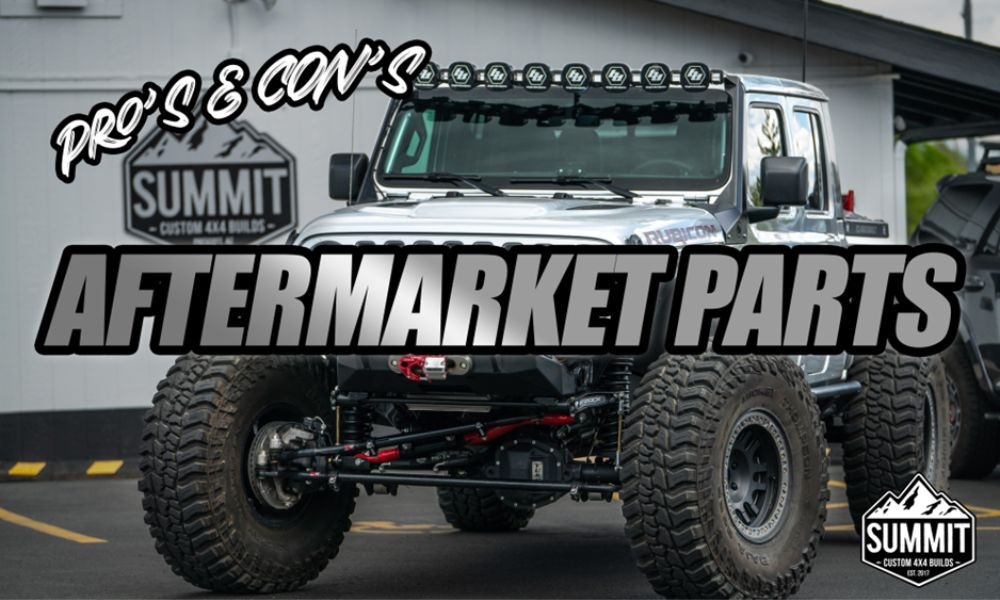Off-road trucks require robust and reliable parts to handle the rigors of rough terrains and challenging environments. When it comes to enhancing or repairing these vehicles, aftermarket parts are a popular choice among enthusiasts and professionals. However, the cost of these parts can vary significantly. Understanding the factors that influence the pricing of off-road truck aftermarket parts can help you make informed purchasing decisions.
Skid plates are essential protective components for off-road vehicles, safeguarding the undercarriage from rocks, debris, and rough terrain. Typically made from durable materials like steel or aluminum, they prevent damage to vital parts such as the engine, transmission, and fuel tank, enhancing the vehicle’s durability and off-road capability.
1. Material Quality
Durability and Performance
The quality of materials used in aftermarket parts plays a significant role in their cost. High-quality materials such as carbon fiber, aerospace-grade aluminum, and heavy-duty steel are more expensive but offer superior durability and performance. These materials can withstand the harsh conditions of off-road driving, providing long-term value despite their higher upfront cost.
Manufacturing Process
Advanced manufacturing processes, such as precision machining and specialized coatings, also contribute to the cost. Parts that undergo rigorous testing and quality control measures ensure reliability and longevity, justifying the higher price point.
2. Brand Reputation
Established Brands vs. Generic Options
Brand reputation is a key factor in the pricing of aftermarket parts. Established brands with a history of producing reliable and high-performance parts often charge more due to their proven track record. These brands invest heavily in research and development, ensuring their products meet or exceed industry standards.
Warranty and Support
Reputable brands typically offer better warranties and customer support, adding to the perceived value of their products. While generic or lesser-known brands may offer lower prices, they often lack the same level of assurance and after-sales service.
3. Part Complexity
Simple vs. Complex Components
The complexity of the part itself affects the cost. Simple components like filters or bolts are generally cheaper compared to complex systems such as suspension kits or differential lockers. Complex parts often require intricate design, multiple components, and precise engineering, which increase manufacturing costs.
Installation Requirements
Parts that are easy to install may cost less in terms of labor, while those requiring specialized tools or professional installation can add to the overall expense. Consider the total cost, including installation, when evaluating aftermarket parts.
4. Customization and Specialization
Custom-Made Parts
Custom-made or specialized parts tailored to specific vehicle models or user requirements are more expensive. These parts often involve additional design work and may be produced in smaller quantities, leading to higher costs.
Universal Fit Parts
Universal fit parts, designed to work with a variety of vehicle models, are generally less expensive. However, they may not offer the same level of performance or fitment as custom or vehicle-specific parts.
5. Market Demand
Popularity and Trends
Market demand significantly influences the cost of aftermarket parts. Popular parts for widely-used off-road truck models are often priced higher due to increased demand. Conversely, parts for less common models may be cheaper but harder to find.
Seasonal Variations
Demand for certain parts can fluctuate seasonally. For instance, parts that enhance winter driving capabilities may see a price increase during colder months. Understanding market trends can help you time your purchases to get the best prices.
6. Supply Chain Factors
Availability of Raw Materials
The availability and cost of raw materials directly impact the pricing of aftermarket parts. Fluctuations in the supply chain, such as shortages or increased tariffs, can lead to higher costs for manufacturers, which are then passed on to consumers.
Manufacturing and Shipping Costs
Global manufacturing and shipping costs also play a role. Parts manufactured in regions with lower production costs may be cheaper, but shipping expenses and import duties can offset these savings. Consider the total landed cost, including shipping and taxes, when comparing prices.
7. Technological Advancements
Integration with Modern Technologies
Parts that integrate advanced technologies, such as electronic control units (ECUs), GPS, and smart diagnostics, are typically more expensive. These technologies enhance performance and provide additional features but require sophisticated design and manufacturing processes.
Research and Development
Continuous innovation and improvement in aftermarket parts involve significant investment in research and development. Companies that lead in technological advancements often charge higher prices to recoup these investments and fund ongoing innovation.
Conclusion
The cost of off-road truck aftermarket parts is influenced by a variety of factors, including material quality, brand reputation, part complexity, customization, market demand, supply chain factors, and technological advancements. Understanding these factors can help you make informed decisions and find the right balance between cost and performance. By considering all these aspects, you can ensure that you invest in aftermarket parts that meet your needs and enhance the performance and reliability of your off-road truck.
